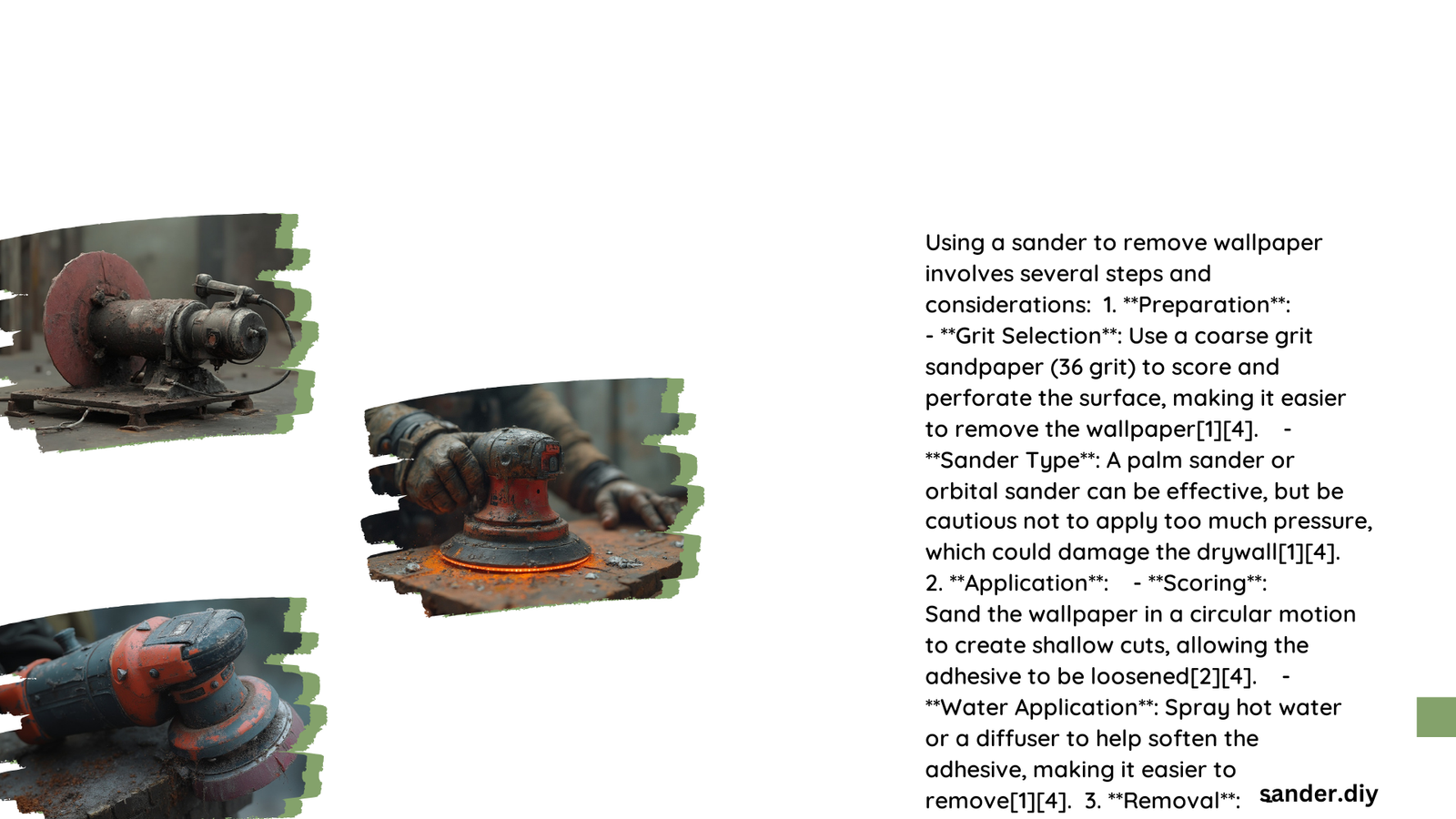Removing wallpaper can be a challenging task, but using a sander provides a strategic approach to smoothing and preparing walls for new finishes. Professional painters and home renovation experts recognize that strategic sanding can transform difficult wallpaper surfaces into pristine canvases ready for painting or redecorating. This comprehensive guide will walk you through precise techniques, essential tools, and professional strategies for successfully using a sander to remove wallpaper.
What Tools Do You Need for Wallpaper Sanding?
Essential Equipment
| Tool | Purpose | Recommended Specification |
|---|---|---|
| Electric Palm Sander | Primary Sanding Tool | 6-inch self-vacuuming model |
| Sandpaper | Surface Smoothing | 150-220 grit |
| Dust Mask | Personal Protection | N95 or Higher Rating |
| Safety Glasses | Eye Protection | Clear, Impact-Resistant |
| Drywall Mud | Surface Leveling | Pre-mixed, Smooth Consistency |
How to Prepare Walls Before Sanding?

Before beginning the sanding process, thorough wall preparation is crucial:
- Inspect Wall Surface
- Identify loose wallpaper sections
- Manually peel off easily detachable areas
-
Check for underlying wall damage
-
Clear Work Area
- Remove furniture
- Cover floors with drop cloths
- Ensure proper ventilation
- Disconnect electrical outlets
What Sanding Techniques Ensure Best Results?
Professional Sanding Approach
- Use light, consistent pressure
- Move sander in circular or back-and-forth motions
- Focus on seams and uneven wallpaper edges
- Maintain constant movement to prevent surface damage
- Work in small, manageable sections
How to Minimize Potential Wall Damage?
Critical Sanding Precautions
- Avoid applying excessive pressure
- Use progressive grit sandpaper (start coarse, finish fine)
- Keep sander moving continuously
- Check surface frequently for evenness
- Use vacuum attachment to control dust
What Are Common Mistakes to Avoid?
Sanding Pitfalls
- Over-sanding specific areas
- Neglecting protective equipment
- Skipping surface priming
- Using inappropriate sandpaper grit
- Rushing the process
Pro Tips for Smooth Wallpaper Removal
- Temperature Matters: Work in moderate temperatures (60-75°F)
- Humidity Control: Ensure low humidity for better adhesion
- Lighting is Key: Use bright, direct lighting to spot imperfections
- Patience Pays Off: Take time with each section
Safety Recommendations
Personal Protective Gear
- Wear respiratory mask
- Use safety glasses
- Protect hands with work gloves
- Consider ear protection during extended sanding
Final Surface Preparation
After sanding:
1. Apply thin drywall mud to smooth seams
2. Allow complete drying
3. Sand mud layer lightly
4. Apply primer
5. Prepare for painting or new wallpaper installation
Pro Insight: Professional painters recommend a minimum of two primer coats for optimal surface preparation.
Estimated Time and Effort
| Wall Size | Estimated Sanding Time | Difficulty Level |
|---|---|---|
| Small Room (100 sq ft) | 2-3 hours | Moderate |
| Medium Room (200 sq ft) | 4-5 hours | Challenging |
| Large Room (300+ sq ft) | 6-8 hours | Advanced |
Conclusion
Using a sander to remove wallpaper requires skill, patience, and proper technique. By following these professional guidelines, you can transform challenging wallpapered surfaces into smooth, paint-ready walls.
